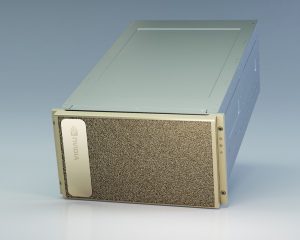If you’ve been reading the press this year, you’ve probably seen mention of deep learning or machine learning. You’ve probably gotten the impression they can do anything and solve every problem. It’s true that computers can be better than humans at recognizing people’s faces or playing the game Go. However, it’s not the solution to every problem. We want to help you understand if you can use deep learning. And if so, how it will help you.
Just as they have for decades, computers performing deep learning are running a specific set of instructions specified by their programmers. Only now, we have a method which allows them to learn from their mistakes until they’re doing the task with high accuracy.
If you have a lot of data (images, videos, text, numbers, etc), you can use that data to train your computers on what you want done with the information. The result, an artificial neural network trained for this specific task, can then process any new data you provide.
We’ve written a detailed post on recent developments in Deep Learning applications. Below is a brief summary.
What types of problems are being solved using Deep Learning?
Computer Vision
If you have a lot imaging data or photographs, then deep learning should certainly be considered. Deep learning has been used extensively in the field of computer vision. For example, image classification (describing the items in a picture) and image enhancement (removing defects or fog from photographs). It is also vital to many of the self-driving car projects.
Written Language and Speech
Deep Learning has also been used extensively with language. Certain types of networks are able to picks clues and meaning from written text. Others have been created to translate between different languages. You may have noticed that smartphones have recently become much more accurate at recognizing spoken language – a clear demonstration of the ability of deep learning.
Scientific research, engineering, and medicine
Materials scientists have used deep learning to predict how alloys will perform – allowing them to investigate 800,000 candidates while conducting only 36 actual, real-world tests. Such success promises dramatic improvements in the speed and efficiency of such projects in the future.
Physicists researching the Higgs boson have used deep learning to clean up their data and better understand what happens when they witness one of these particles. Simply dealing with the data from CERN’s Large Hadron Collider has been a significant challenge for these scientists.
Those studying life science and medicine are looking to use these methods for a variety of tasks, such as:
- determining the shape of correctly-folded proteins (some diseases are caused by proteins that are not shaped correctly)
- processing large quantities of bioinformatics data (such as the genomes in DNA)
- categorizing the possible uses of drugs
- detecting new information simply by examining blood
If you have large quantities of data, consider using deep learning
Meteorologists are working to predict thunderstorms by sending weather data through a specialized neural network. Astronomers may be able to get a handle on the vast quantities of images and data that are captured by modern telescopes. Hospitals are expected to be using deep learning for cancer detection. There are many other success stories, and new papers are being published every month.
For details on recent projects, read our blog post on deep learning applications.
Want to use Deep Learning?
If you think you could use deep learning, Microway’s experts will design and build a high-performance deep learning system for you. We’d love to talk with you.

